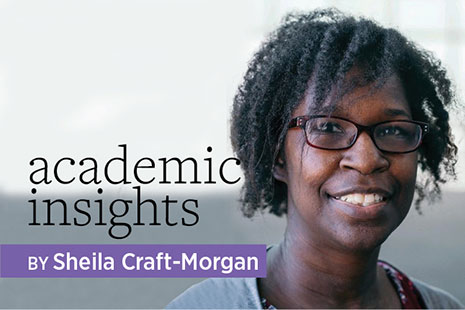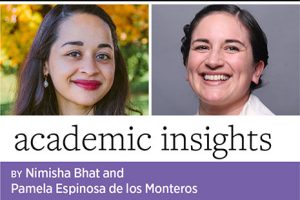
Citations are a key measure of the impact of a researcher’s work. However, research in a variety of disciplines has found that women are less likely to be cited than men; citations contain geographic bias; and the Matthew effect—in which those who begin with advantage continue to gain advantage—leads to more citations for prominent scholars in a specific discipline.
These findings contribute to the notion that scholarly knowledge comes from a homogenous group of researchers, thereby overlooking the contributions of other groups. This phenomenon has been referred to as epistemological racism or screening, among other terms.
In 2017, I read about the “Cite Black Women” campaign founded by Christen A. Smith, an anthropologist whose work was plagiarized at a conference she was attending. This rallying cry still resonates with me: How can we discuss research impact in a meaningful way if systemic issues that have nothing to do with quality of the work affect the way that work is cited, received, and disseminated?
Within library and information science, research impact exists at the intersection of scholarly communications and bibliometrics. In addition to tracking research metrics—such as h-index scores, citations, and alternative metrics—research impact librarians advise faculty and students on scholarly profiles, promoting their work and making it discoverable. However, one key point missing from these discussions is the importance of diversity, equity, inclusion, and justice (DEIJ) as they relate to impact and efforts to mitigate bias.
How do we discuss impact without acknowledging that systemic issues affect the way research is cited?
Academic librarians are uniquely positioned to talk about these issues. Just as librarians are incorporating discussion of the responsible use of metrics into resource guides, so too should we curate and share information about the composition of editorial boards, the different types of peer review, and citational justice. Such absence from resource guides connotes that they are not relevant to our constituents, as I’ve found in my own research.
Here are ways librarians can learn and share information about DEIJ in relation to research impact and the mitigation of bias in the research life cycle:
First, become familiar with the responsible use of metrics, including resources like the San Francisco Declaration on Research Assessment (DORA), Leiden Manifesto, and Metric Tide. These statements have focused on one aspect of bias, the efficacy and applicability of the h-index to different disciplines, and length of career.
Next, review the literature on citation bias, language bias, and other types of bias present in the research life cycle. While there has been some coverage of these issues in LIS literature, most of the research exists in other disciplines. Sources of information include the Association of College and Research Libraries’ Open and Equitable Scholarly Communications report, Springer Nature’s collection of resources about DEI in research publishing, the Coalition for Diversity and Scholar Communications’ Toolkits for Equity, and DORA’s Rethinking Research Assessment, among others.
Finally, incorporate this information into your resource guides and instruction. The DEI in Scholarly Communication guide from University of California’s Office of Scholarly Communication provides an example of a guide that incorporates information about DEI in scholarly publishing from the perspective of peer review and editorial boards, authors, scholarly publishers, and libraries. This may be a good time to review your guide for the use of inclusive language and review other ways to promote inclusivity.
These steps can confront the tacit silence on the issue of bias and incorporate it into the conversation about research impact. This will lead to a richer discussion and awareness of these issues in the context of the impact of research at the individual level, evaluating research for promotion and tenure, and benefits of research to the public. Ultimately, librarians can forge a partnership with other organizations to address these issues for the greater good of the scholarly environment.


